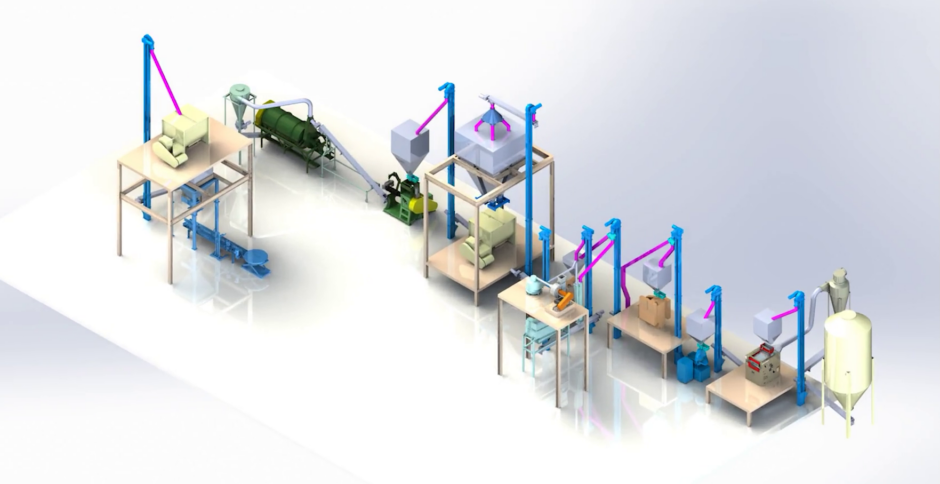Process Flow: Corn Soya Blend

Corn soya blend (CSB) is a well-recognized fortified blended food used all around the world to support the eradication of malnutrition. This product is in high demand for both children and adults. International relief agencies such as the World Food Program and UNICEF as well as many charitable organizations support CSB production by purchasing and distributing it in places of need. CSB is primarily comprised of corn and soybeans with the addition of vitamins and minerals. The process flow for creating CSB includes several steps. Furthermore, these steps must be performed to ensure a quality product with high nutritional value. An example of a typical CSB process flow is as follows:
Cleaning
It is important to start with fresh, high quality corn and soybeans. These components are typically cleaned in an air screen cleaner followed by a destoner. These machines are intended to remove foreign materials including substances that may be hazardous to human health. The air screen cleaner uses a series of screens to clean by size. Material that is larger or smaller than the corn and soybeans will be separated and removed. The air screen cleaner also includes a vertical air stream which removes very light or fine material. After the air screen cleaner, a destoner is used for additional cleaning by density. The destoner will remove materials that are the same size as the corn and soybeans but heavier. This typically includes stones and dense soil peds. These machines help automate the process, but manually cleaning the beans is a common and low-cost alternative for those new to producing CSB.
Dehulling and Particle Size Reduction
After cleaning, soybeans are typically dehulled. This includes cracking the soybeans with a roller mill to loosen the hulls. Then an aspirator and sifter are used to separate the hulls from the soybean pieces. Finally, a hammermill is used to grind the reclaimed soybean pieces to a consistent particle size. Corn, alternatively, does not need to be dehulled and can go straight from cleaning to the hammermill. The same hammermill can be used to grind the corn to a consistent particle size that matches the soybeans.
Mixing and Extrusion
After grinding, the ground corn and soybeans are stored in separate bins. These components are then metered into a mixer at an approximate corn to soybean ratio of 80/20 or 70/30. The mixed product is then heat treated and cooked using an extruder. This is the most important step in the process. The extruder works to pre-gelatinize starches, improve digestibility of proteins, and deactivate anti-nutritional factors.
Cooling, Blending, and Packaging
After extrusion, it is necessary to cool the product to a safe storage temperature. Depending on the capacity, a rotary drum cooler or a counterflow cooler are good options for fulfilling this task. Due to the relatively large and variable particle size of the extruded corn and soybean mix, additional grinding is required. A second hammermill is used to grind the material to a consistent final particle size. Now the product is ready to have vitamins, minerals, and sometimes sugar added. This needs to be metered as these components are added to the corn and soybean mix in specific and small quantities. The next step is to mix the product using a second mixer to create a uniform and homogenous product. The product is finally ready to be packaged in the desired size bag and distributed. Much like cleaning, some of these processes (such as premix addition and bagging) can be more manual to reduce initial investment costs.
While this process https://www.insta-pro.com/ may vary slightly, this is a general approach to manufacturing CSB. The quality of incoming material, specific final product requirements, as well as other factors determine the final process. Our primary goal is to help you be successful in developing optimized products using extrusion technologies.

